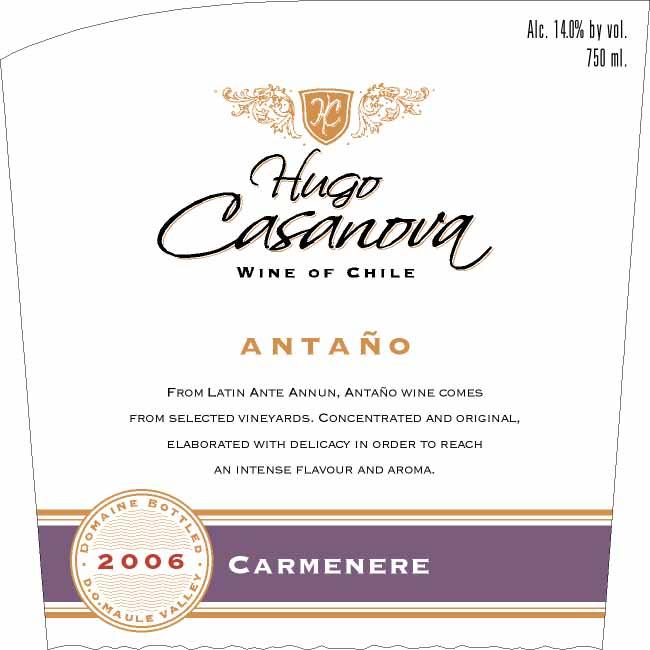2006 Maule Valley Carmenere
Hugo Casanova Antaño is a captivating red wine hailing from the renowned Maule Valley, celebrated for its rich and diverse terroir. This 2006 Carmenere showcases an inviting deep crimson color, hinting at its vibrant character. On the palate, it reveals a luscious full-bodied profile with a delightful balance that presents both moderate acidity and remarkable fruit intensity. The wine is generously endowed with prominent notes of dark berry fruits, such as blackcurrant and blackberry, intertwined with subtle hints of herbal undertones and earthy nuances that reflect its terroir. Its tannins are notably firm, providing a structured backbone that enhances the wine's longevity, while finishing with an exquisite touch of dryness that invites further exploration with each sip. Hugo Casanova Antaño embodies the essence of the Maule Valley's winemaking tradition, perfect for pairing with hearty dishes or enjoying on its own.
Hugo Casanova Antaño is a captivating red wine hailing from the renowned Maule Valley, celebrated for its rich and diverse terroir. This 2006 Carmenere showcases an inviting deep crimson color, hinting at its vibrant character. On the palate, it reveals a luscious full-bodied profile with a delightful balance that presents both moderate acidity and remarkable fruit intensity. The wine is generously endowed with prominent notes of dark berry fruits, such as blackcurrant and blackberry, intertwined with subtle hints of herbal undertones and earthy nuances that reflect its terroir. Its tannins are notably firm, providing a structured backbone that enhances the wine's longevity, while finishing with an exquisite touch of dryness that invites further exploration with each sip. Hugo Casanova Antaño embodies the essence of the Maule Valley's winemaking tradition, perfect for pairing with hearty dishes or enjoying on its own.




